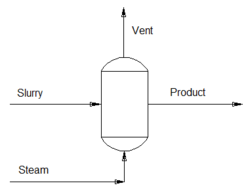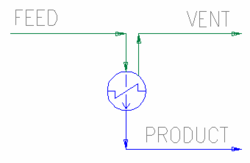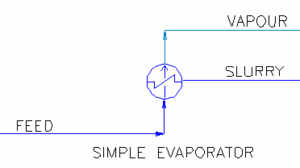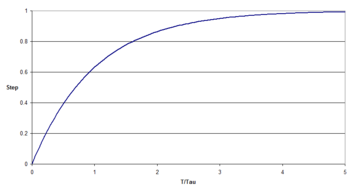SysCAD 137 New Models and Add-On
Navigation: User Guide ➔ SysCAD Version History ➔ Build 137 Release Notes ➔ New Models and Add-On
| Build 137 Release Notes (Summary) | ||||||||
|---|---|---|---|---|---|---|---|---|
| New Models and Add-On | Model Improvements | Reaction Block Improvements | User Interface Improvements | Other Improvements | Project Upgrade And Changes that Affect Results | |||
Latest SysCAD Version: 25 February 2025 - SysCAD 9.3 Build 139.37016
Related Links: Build 137 Revision History, Upgrading Projects
New Models
Direct Contact Heater 2
 (Full documentation of this unit operation can be found here: Direct Contact Heater 2)
(Full documentation of this unit operation can be found here: Direct Contact Heater 2)
- The new Direct Contact Heater 2 is used to transfer energy from a stream containing live steam to a liquid or slurry stream.
- It has additional options and improved functionality compared to the original Direct Contact Heater model which includes:
- Pressure specification
- Vent stream Handling
- The model can make use of the Demand logic, including as part of a Flash Train.
Pressure Exchanger
 (Full documentation of this unit operation can be found here: Pressure Exchanger)
(Full documentation of this unit operation can be found here: Pressure Exchanger)
- The new Pressure Exchanger unit model can be used to model energy recovery devices such as those used in reverse osmosis plants to recover energy from high pressure brine streams.
- The unit has two feeds, a low pressure feed and a high pressure feed. The pressure energy in the high pressure feed is transferred to the low pressure stream, thus acting like a pump for the low pressure stream, increasing its pressure.
- The model can be used to model a wide variety of physical devices such as a Pelton wheel, a Francis turbine, a reverse pump, a Turbocharger and a PX.
- The model includes a leakage parameter to allow for modelling of devices where some mixing can occur.
- The model can make use of the Demand logic to set the flow on the low pressure side.
Simple Condenser
 (Full documentation of this unit operation can be found here: Simple Condenser)
(Full documentation of this unit operation can be found here: Simple Condenser)
- The new Simple Condenser is a generic "heat exchanger" model without regards to its cooling media or equipment size.
- It can provide estimates of the Duty required to condense an amount of material, or alternatively, determine the amount of condensation for a given duty or temperature.
- The model can make use of the Demand logic, including as part of a Flash Train.
Simple Evaporator
 (Full documentation of this unit operation can be found here: Simple Evaporator)
(Full documentation of this unit operation can be found here: Simple Evaporator)
- The new Simple Evaporator is a generic "heat exchanger" model without regards to its heating media or equipment size.
- It is designed to give estimates of the Duty required to evaporate a required amount of material. Only a single component can be evaporated such as H2O(l) or NH3(aq).
Slew Rate Controller
- The new Slew Rate Controller is used to gradually change a process variable to a setpoint.
- It can be used in both steady-state and dynamic simulations for the purpose of making gradual changes.
- It has a number of methods available to make the gradual change including fixed rates and first order response.
 (Full documentation of this unit operation can be found here: Slew Rate Controller)
(Full documentation of this unit operation can be found here: Slew Rate Controller)
Thermocompressor
 (Full documentation of this unit operation can be found here: Thermocompressor)
(Full documentation of this unit operation can be found here: Thermocompressor)
- The new Thermocompressor is a form of steam ejector in which a flow of higher pressure primary steam is used to entrain lower pressure secondary steam.
- The discharge stream is at an intermediate pressure between the high and low pressure steam flows. This potentially enables recovery of some of the energy in the low grade steam.
- The Thermocompressor model in SysCAD is based on data sheets from the Shutte and Koerting company.
Underflow Washer
 (Full documentation of this unit operation can be found here: Underflow Washer)
(Full documentation of this unit operation can be found here: Underflow Washer)
The Underflow Washer is used to separate the solids from the liquids in the feed stream and then wash the solids with a wash stream. This unit is similar to the Washer and the Counter Current Washer.
- The user defines the percentage solids in both the underflow and the overflow from the unit.
- If there is insufficient solids in the feed to the Underflow Washer to satisfy both the under and over flow requirements, the unit will try to satisfy the underflow solids / liquids requirements first.
- The wash stream combines with the underflow solids and 'washes' the feed liquid out of the solid stream.
- The model allows the user to set sub-models in the Feed section, Underflow and Overflow sections. The following sub-models are avaialble in each section:
- The Feed section, EB, allows the user to set Solubility, Reactions, Makeups, Environmental Heat Exchange and Evaporation;
- The Overflow section, OFEB, allows the user to set Solubility, Reactions, Environmental Heat Exchange and Evaporation; and
- The Underflow section, UFEB, allows the user to set Solubility and Reactions.
- The temperature of the solids and liquids is calculated after any reactions and/or heat loss has occurred.
New SysCAD OLI Add-on
Implemented new OLI add-on for SysCAD. OLI Systems provide leading Electrolyte Simulation Software. This SysCAD add-on requires an appropriate license from OLI Systems (olisystems.com) as well as requiring SysCAD "Heat Exchange" and "SMDK Runtime" add-ons. OLI in SysCAD is not implemented as a Species Properties Model but as unit models for use at appropriate locations in a plant model. Currently the following unit models using OLI are implemented:
- OLI Chemistry Model - Used to define and view various options for the selected OLI chemistry model, including management of mapping of SysCAD species list to species list used in OLI.
- OLI Sample Model - Stand alone unit model to perform side calculations using OLI for predicting aqueous chemistry equilibrium conditions and properties including pH.
- OLI Reactor - Include this model in a SysCAD stream to use OLI to calculate predicted outlet conditions. Functionality is similar to SysCAD Reaction Block and FEM where for a given feed reactions occur with optional heat exchange. The model can be configured in a number of ways for different purposes.